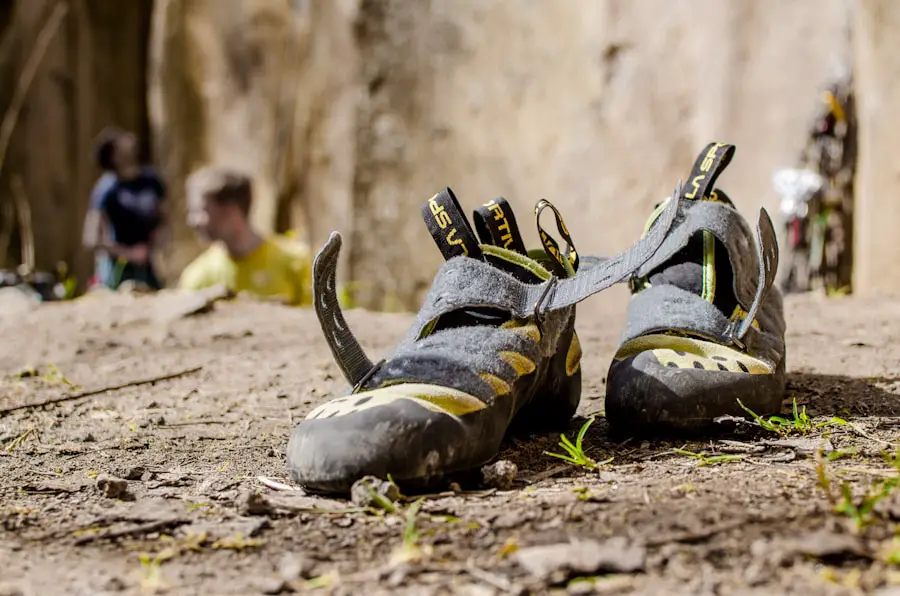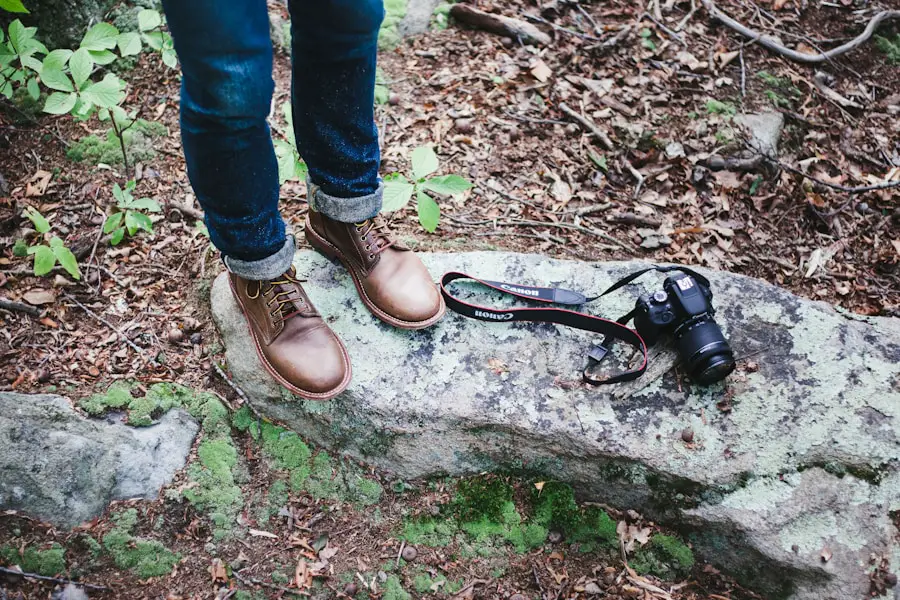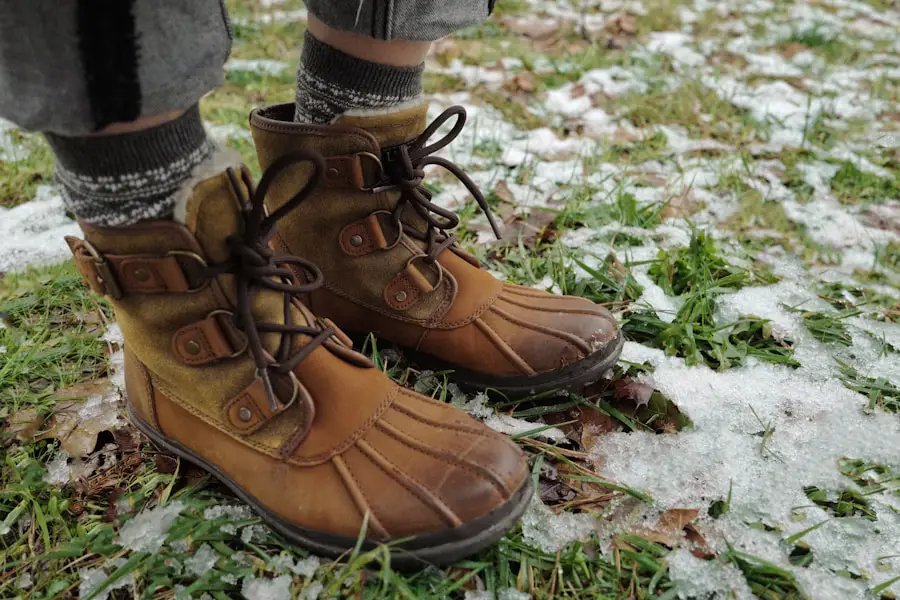Hiking boots and mountain biking are two outdoor activities that attract enthusiasts seeking adventure and a connection with nature. Hiking boots are designed to provide support, stability, and protection for the feet while traversing rugged terrains, while mountain biking involves navigating trails and paths on a specialized bicycle. Both activities require a certain level of physical fitness and an appreciation for the great outdoors, but they also demand specific gear tailored to their unique challenges.
As outdoor enthusiasts often seek versatility in their equipment, the question arises: can hiking boots serve as an adequate substitute for mountain biking shoes? The growing popularity of both hiking and mountain biking has led to a blending of gear preferences among outdoor adventurers. Many individuals who enjoy both activities may wonder if they can use their hiking boots while mountain biking, especially when considering the cost and space required for specialized footwear.
Understanding the differences between these two types of footwear, as well as the potential benefits and drawbacks of using hiking boots for biking, is essential for making informed decisions about gear. This article delves into the nuances of hiking boots and mountain biking shoes, exploring their respective designs, functionalities, and suitability for each activity.
Key Takeaways
- Hiking boots and mountain biking shoes serve different purposes and have distinct features.
- Hiking boots provide ankle support and protection, while mountain biking shoes offer better pedal grip and flexibility.
- Wearing hiking boots for mountain biking can provide stability and protection, but may limit pedal feel and agility.
- When choosing hiking boots for mountain biking, consider factors such as ankle support, sole stiffness, and breathability.
- Modifying hiking boots for mountain biking, such as adding a stickier sole or cutting down the ankle height, can improve their performance.
Differences Between Hiking Boots and Mountain Biking Shoes
Hiking boots are engineered with specific features that cater to the demands of walking on uneven surfaces. They typically have a sturdy construction, with a high ankle design that provides support and stability to prevent injuries on rocky or uneven terrain. The soles of hiking boots are often made from rubber compounds that offer excellent traction, allowing hikers to grip various surfaces effectively.
Additionally, hiking boots are usually insulated and waterproof, making them suitable for diverse weather conditions. In contrast, mountain biking shoes are designed with a focus on performance and efficiency while riding. They often feature a stiffer sole that allows for better power transfer from the foot to the pedal, enhancing pedaling efficiency.
Many mountain biking shoes come with a clipless pedal system that secures the foot to the pedal, providing greater control during descents and technical maneuvers. The design of these shoes is generally lower cut than hiking boots, allowing for greater freedom of movement in the ankle area, which is crucial for maintaining balance and agility on a bike.
Pros and Cons of Wearing Hiking Boots for Mountain Biking

Wearing hiking boots for mountain biking can offer several advantages. One of the primary benefits is the added ankle support that hiking boots provide. This can be particularly helpful when navigating rough trails or steep descents, where the risk of rolling an ankle is heightened.
The robust construction of hiking boots also offers protection against rocks, roots, and other obstacles that may be encountered on a trail. Furthermore, hikers who already own a good pair of hiking boots may find it convenient to use them for biking, eliminating the need for additional footwear. However, there are notable drawbacks to consider when opting for hiking boots while mountain biking.
The stiffness of hiking boot soles can hinder pedaling efficiency, as they do not allow for the same level of flex as dedicated mountain biking shoes. This can lead to discomfort during long rides and may result in fatigue more quickly than if one were wearing appropriate cycling footwear. Additionally, the bulkiness of hiking boots can make it challenging to maneuver the feet on the pedals, particularly when attempting to shift positions or perform technical maneuvers.
The weight of hiking boots compared to lighter biking shoes can also be a disadvantage during extended rides.
Tips for Choosing the Right Hiking Boots for Mountain Biking
| Factors to Consider | Importance |
|---|---|
| Fit | Very Important |
| Support | Crucial |
| Traction | Essential |
| Waterproofing | Important |
| Weight | Significant |
| Durability | Key |
When selecting hiking boots for mountain biking, several factors should be taken into account to ensure comfort and performance. First and foremost, fit is crucial; the boots should be snug but not overly tight, allowing for some movement without causing blisters or discomfort. It is advisable to try on boots with the socks intended for biking to achieve an accurate fit.
Additionally, consider the type of terrain you will be riding on; if you plan to tackle rocky or uneven trails, opt for boots with a more aggressive tread pattern for better traction. Another important aspect is the weight of the boots. Lighter options can enhance performance by reducing fatigue during long rides.
Look for materials that provide durability without excessive weight; synthetic materials often offer a good balance between strength and lightness. Waterproofing is also worth considering if you anticipate riding in wet conditions; however, keep in mind that waterproof materials can sometimes lead to overheating during warmer weather. Lastly, ensure that the boots have adequate cushioning to absorb shocks from rough terrain while still providing enough stiffness in the sole for effective power transfer.
How to Modify Hiking Boots for Mountain Biking
If you decide to use hiking boots for mountain biking but want to enhance their performance further, there are several modifications you can make. One effective adjustment is to replace the insoles with specialized cycling insoles that offer better arch support and cushioning tailored for pedaling dynamics. This can improve comfort during rides and help prevent foot fatigue.
Another modification involves adjusting the lacing system. Many hiking boots come with traditional laces that may not provide the same level of security as a more modern system found in cycling shoes. Consider adding lace locks or using elastic laces that allow for quick adjustments while ensuring a snug fit around the foot.
Additionally, if your hiking boots have a high ankle design, you might want to experiment with loosening them slightly during rides to allow for greater ankle mobility without sacrificing too much support.
Potential Risks of Wearing Hiking Boots for Mountain Biking

While there are benefits to wearing hiking boots while mountain biking, there are also inherent risks that should not be overlooked. One significant concern is the potential for decreased control over the bike due to the lack of a clipless pedal system commonly found in mountain biking shoes. Without being securely attached to the pedals, riders may find it challenging to maintain stability during technical sections or when navigating steep descents.
Moreover, the bulkiness of hiking boots can lead to difficulty in quickly repositioning feet on the pedals or disengaging from them in emergency situations. This can increase the risk of accidents or falls, particularly in challenging terrain where quick reflexes are necessary. Additionally, if hiking boots do not provide adequate ventilation, riders may experience overheating or excessive sweating during long rides, leading to discomfort and potential foot issues such as blisters or fungal infections.
Alternatives to Hiking Boots for Mountain Biking
For those who prefer not to wear hiking boots while mountain biking, there are numerous alternatives available that cater specifically to cycling needs. Mountain biking shoes come in various styles designed for different types of riding—ranging from cross-country to downhill—each offering unique features tailored to specific demands. For instance, cross-country shoes tend to be lightweight with stiff soles for optimal power transfer, while downhill shoes often prioritize protection and grip.
Another option is hybrid shoes that combine elements from both hiking and cycling footwear. These shoes typically feature a rugged sole suitable for walking while still providing enough stiffness for efficient pedaling. They often come with a more casual design that allows them to be worn off the bike as well, making them versatile for those who enjoy both activities without needing separate footwear.
Final Thoughts on Using Hiking Boots for Mountain Biking
In summary, while hiking boots can serve as an alternative footwear option for mountain biking under certain circumstances, they come with both advantages and disadvantages that must be carefully weighed. The decision ultimately depends on individual preferences, riding style, and terrain conditions. For those who prioritize ankle support and protection from trail hazards, hiking boots may be suitable; however, riders seeking optimal performance and efficiency may find dedicated mountain biking shoes more beneficial.
Ultimately, understanding the specific requirements of each activity will guide outdoor enthusiasts in making informed choices about their gear. Whether opting for hiking boots or specialized cycling footwear, ensuring comfort and safety should always remain paramount in any outdoor adventure.
If you are considering wearing hiking boots for mountain biking, you may want to check out this article on 5 Must-Have Portable Camping Stoves for Your Spring 2025 Adventures. This article provides valuable information on essential gear for outdoor activities, including camping and biking. It can help you make informed decisions about the equipment you need for your next adventure.
FAQs
Can you wear hiking boots for mountain biking?
Yes, you can wear hiking boots for mountain biking, but they may not provide the same level of performance and comfort as dedicated mountain biking shoes.
What are the advantages of wearing hiking boots for mountain biking?
Hiking boots offer good ankle support and protection, which can be beneficial for mountain biking on rough and technical terrain. They also provide good traction and stability.
What are the disadvantages of wearing hiking boots for mountain biking?
Hiking boots are generally heavier and less flexible than mountain biking shoes, which can affect pedaling efficiency and overall comfort. They may also not have the same level of grip on the pedals.
Can hiking boots be used as a temporary solution for mountain biking?
Yes, if you do not have mountain biking shoes, hiking boots can be used as a temporary solution for mountain biking. However, it is recommended to invest in dedicated mountain biking shoes for better performance and comfort in the long run.
What should I consider when choosing hiking boots for mountain biking?
Look for hiking boots with a stiff sole for better power transfer, good ankle support, and a grippy outsole for traction on the pedals. It’s also important to ensure that the boots are comfortable and provide a secure fit.
